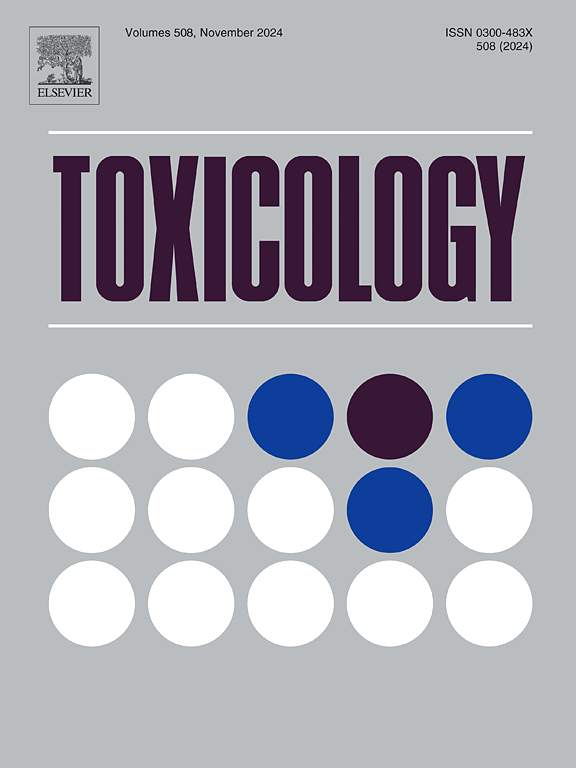Particulate matter 2.5 stimulates pyroptosis and necroptosis via the p38 MAPK/Akt/NF-κB signaling pathway in human corneal epithelial cells
IF 4.8
3区 医学
Q1 PHARMACOLOGY & PHARMACY
引用次数: 0
Abstract
Particulate matter 2.5 (PM2.5) exposure poses significant health risks, particularly to the eyes. This study aimed to investigate the cytotoxic effects of PM2.5 on human corneal epithelial cells (HCECs) and to elucidate the mechanisms involved in pyroptosis and necroptosis. HCECs were exposed to PM2.5, and cytotoxicity, reactive oxygen species (ROS) levels, and the expression of pyroptosis- and necroptosis-related proteins were assessed. The roles of nuclear factor-kappa B (NF-κB) and nucleotide-binding domain, leucine-rich-containing family, pyrin domain-containing-3 (NLRP3) inflammasome signaling pathways were also investigated. Exposure to PM2.5 caused a dose-dependent decrease in cell viability, accompanied by significant NLRP3 inflammasome activation, leading to pyroptosis and the release of pro-inflammatory cytokines. Enhanced ROS generation and mitochondrial dysfunction have also been observed, along with indicators of necroptosis, such as increased levels of mixed-lineage kinase domain-like proteins. Importantly, activation of the NF-κB signaling pathway was crucial for these responses. The suppression of p38 mitogen-activated protein kinase (MAPK) and activation of protein kinase B (Akt) using pharmacological modulators SB203580 and SC79, respectively, significantly reduced PM2.5-mediated cellular damage. These findings indicate that p38 MAPK inhibition and Akt activation are key regulatory mechanisms that help attenuate the deleterious effects of PM2.5 on HCECs. In conclusion, our findings offer new insights into the mechanisms by which PM2.5 induces pyroptosis and necroptosis in HCECs, especially by activating the NLRP3 inflammasome and NF-κB signaling pathways. The critical regulatory roles of p38 MAPK and Akt underscore their potential as therapeutic targets to alleviate PM-induced ocular damage.
颗粒物质2.5通过p38 MAPK/Akt/NF-κB信号通路刺激人角膜上皮细胞焦亡和坏死
接触颗粒物质2.5 (PM2.5)会造成重大健康风险,尤其是对眼睛。本研究旨在探讨PM2.5对人角膜上皮细胞(HCECs)的细胞毒性作用,并阐明其焦亡和坏死的机制。将HCECs暴露于PM2.5中,评估细胞毒性、活性氧(ROS)水平以及焦亡和坏死相关蛋白的表达。研究了核因子κB (NF-κB)和核苷酸结合结构域、富含亮氨酸家族、含pyrin结构域-3 (NLRP3)炎性小体信号通路的作用。暴露于PM2.5导致细胞活力呈剂量依赖性下降,并伴有NLRP3炎性体的显著活化,导致细胞焦亡和促炎细胞因子的释放。还观察到ROS生成增强和线粒体功能障碍,以及坏死性下垂的指标,如混合谱系激酶结构域样蛋白水平升高。重要的是,NF-κB信号通路的激活对这些反应至关重要。药理调节剂SB203580和SC79分别抑制p38丝裂原活化蛋白激酶(MAPK)和蛋白激酶B (Akt)的活化,可显著降低pm2.5介导的细胞损伤。这些发现表明p38 MAPK抑制和Akt激活是帮助减轻PM2.5对HCECs有害影响的关键调控机制。总之,我们的研究结果为PM2.5诱导HCECs焦亡和坏死的机制提供了新的见解,特别是通过激活NLRP3炎症小体和NF-κB信号通路。p38 MAPK和Akt的关键调控作用强调了它们作为治疗靶点减轻pm诱导的眼部损伤的潜力。
本文章由计算机程序翻译,如有差异,请以英文原文为准。
求助全文
约1分钟内获得全文
求助全文
来源期刊

Toxicology
医学-毒理学
CiteScore
7.80
自引率
4.40%
发文量
222
审稿时长
23 days
期刊介绍:
Toxicology is an international, peer-reviewed journal that publishes only the highest quality original scientific research and critical reviews describing hypothesis-based investigations into mechanisms of toxicity associated with exposures to xenobiotic chemicals, particularly as it relates to human health. In this respect "mechanisms" is defined on both the macro (e.g. physiological, biological, kinetic, species, sex, etc.) and molecular (genomic, transcriptomic, metabolic, etc.) scale. Emphasis is placed on findings that identify novel hazards and that can be extrapolated to exposures and mechanisms that are relevant to estimating human risk. Toxicology also publishes brief communications, personal commentaries and opinion articles, as well as concise expert reviews on contemporary topics. All research and review articles published in Toxicology are subject to rigorous peer review. Authors are asked to contact the Editor-in-Chief prior to submitting review articles or commentaries for consideration for publication in Toxicology.
 求助内容:
求助内容: 应助结果提醒方式:
应助结果提醒方式:


